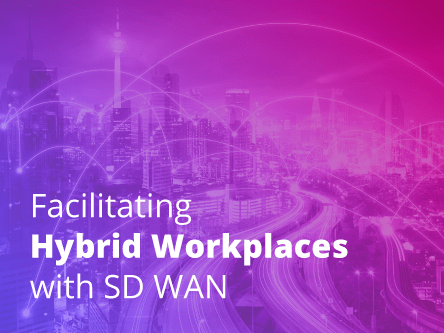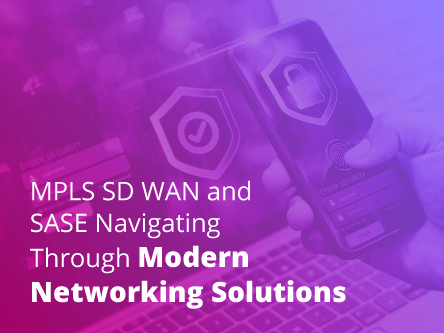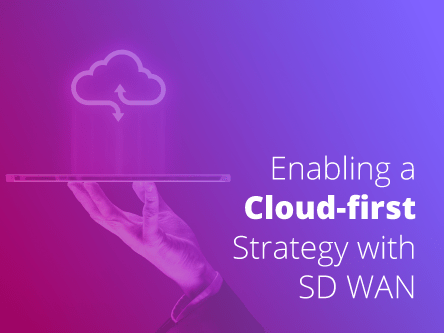Improving digital user experience will remain a massive goal for CIOs throughout 2020.
Customer experience initiatives will be integrated into the broader digital strategy according to a report on CX by Ecosystem. IT teams and frontline departments have to work together to impact how customers interact with the business, which means innovation and collaborations are crucial.
Customers are judging the value delivered by a company based on solely their personal experience.
They want exceptional experiences both online and offline, and their expectations have never been higher thanks to the normalising of on-demand services.
This places additional IT pressure on top of the regular business operations, in order to keep up with the evolving needs of consumers.
On the backend, employees are relying on various platforms, applications and data to drive new user experience (UX). Greater demand in these business functions brings to light the importance of the network.
The use of Multi-Protocol Label Switching (MPLS) in the past has served the basic IT needs.
With the entrance of cloud services, the wide area network (WAN) is becoming a complicated place.
An enterprise HQ is no longer just connected to a few offices and data centres but a number of on-ramps from branch locations to the cloud. MPLS is deemed too slow and expensive to support this hybrid cloud environment.
Over the last few years, software-defined wide-area networking (SD-WAN) emerged as the ideal replacement for MPLS.
This was the starting point for network transformation in enabling businesses to leverage new levels of performance, agility and intelligence when connecting their applications and services for end users globally.
Here are some key areas where SD-WAN will help to facilitate deeper innovation and realise new UX:
- Enhancing service-oriented functions
Traditional WAN like MPLS causes infrastructure sprawl as the business grows in size.There’s way too many devices and appliances connecting different WAN links, which complicates the management of branch IT. Failure to manage this complexity brings trouble to the IT operations which in turn impacts the functions of frontline employees.
If a retail company’s branch location is unable to access the corporate Enterprise Resource Planning (ERP) software, it can cause great disruption in the customers’ shopping experience. The staff will not be able to find out what stocks are available and manage new customers’ orders. SD-WAN brings order and control to the network. It improves efficiency, mitigates the impact of network outages and allows better control over branch connectivity. At the same time, it can also provide analytics and monitoring tools to enterprises, allowing real-time insights into their network. They are able to stay ahead of the curve by tracking, shaping and improving their network according to the business demands. - Expanding into new locations – Fast!
Say your business is growing rapidly and you see the need to setup multiple branch offices in key markets – how fast can you turn up new links to the branch offices? And at the same time, are you able to do it cost efficiently without getting a bill shock?
SD-WAN has all the answers!SD-WAN provides the agility and flexibility to make rapid changes to existing services, as well as the setup and configuration of new WAN links.
Deployment has been said to be about 10 times faster than traditional WAN, which means you can get your business up and running in no time. New equipment setup in the new sites–plug and play–can be easily managed from a centrally-managed controller.This way, a business can quickly serve increasing demands in fast-growing markets and bring their services closer and faster to the customers. - Optimising and securing your business data
Enterprises today are responsible for securing a large set of data, be it customers or operations data.
Network security has shot up to top priority thanks to data protection regulations such as GDPR. Protecting customers’ data should be a critical part of UX design too.Many SD-WAN service providers now offer integrated security features in their solutions.
This allows IT to setup network security policy and intelligently monitor network traffic using a single controller for centralised management. The basic WAN security functions are next-generation firewall and advanced threat prevention such as unified threat management (UTM) and intrusion detection and prevention systems (IDPS).
IT teams can use the same controller to monitor the health of each WAN link, and quickly reroutes traffic when a link congests or fails. This ensures that applications and data are optimised and secure across the entire enterprise network infrastructure.
Should I SD-WAN or Should I Go?
SD-WAN optimises digital UX and has emerged as a reliable alternative to the traditional WAN approach.
The SD-WAN infrastructure market is set to have a 30.8% compound annual growth rate (CAGR) from 2018 to 2023, according to a report by IDC, reaching $5.25 billion.
When enterprises make the move to SD-WAN, they are placing their customers at top of mind while strengthening their overall value chain.
Cost reductions might be driving SD-WAN adoption today, but the long-term value will ultimately be in UX and operational performance.







